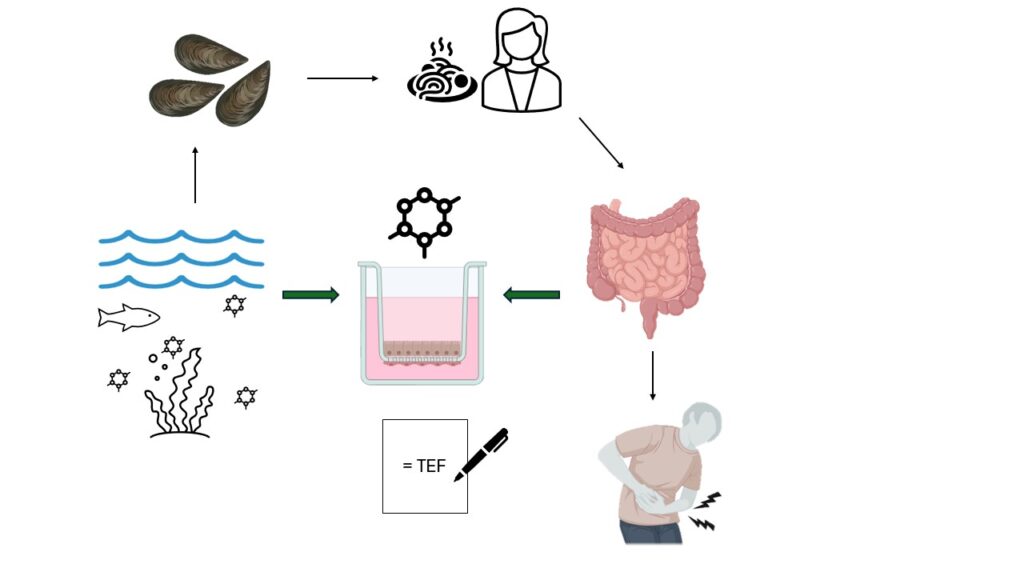Diarrhoea is a common symptom of phycotoxin intoxication. Diarrhoetic shellfish poisoning is the most frequently recorded type of phycotoxin intoxication in Europe and is caused by diarrhoetic shellfish toxins (DSTs). However, DSTs are not the only group of phycotoxins that causes gastrointestinal symptoms. Another example is a group called azaspiracids (AZAs). Neither DSTs nor AZAs have been reported as lethal, but their effects are quite unpleasant. Both groups produce diarrhoea through an unknown mechanism, which complicates setting accurate safety limits and finding treatments. Regarding DSTs, they inhibit protein phosphatases 1 and 2A, but the link between this effect and diarrhoea is unclear. In the case of AZAs, they affect ion channels, but their mechanism of action remains unknown. In the attempt to reduce the use of animals in toxicity testing, DSTs have been tested in a number of cell lines, with the conclusion that there is a variability in their sensitivity to the toxin. The aim of the PhD project at Universidade de Santiago de Compostela (Spain) is to evaluate the effects of DSTs and AZAs with a focus on inflammatory response to elucidate if the inflammatory process is related to the diarrhoea produced by these phycotoxins. A triple co-culture system will be established with the three cell lines, in an attempt to mimic the intestine and better understand the intercellular communications. With the obtained information, new toxicity equivalency factors (TEFs) will be calculated for these groups of toxins, with the objective of finding more accurate values related to diarrhoea.

